-
 Bitcoin
Bitcoin $116700
0.48% -
 Ethereum
Ethereum $4213
6.27% -
 XRP
XRP $3.280
1.22% -
 Tether USDt
Tether USDt $1.000
0.02% -
 BNB
BNB $805.1
2.46% -
 Solana
Solana $180.2
2.65% -
 USDC
USDC $0.0000
0.02% -
 Dogecoin
Dogecoin $0.2412
8.50% -
 TRON
TRON $0.3356
-1.11% -
 Cardano
Cardano $0.8108
3.59% -
 Hyperliquid
Hyperliquid $43.89
8.53% -
 Chainlink
Chainlink $21.15
10.75% -
 Stellar
Stellar $0.4502
1.41% -
 Sui
Sui $3.935
4.69% -
 Bitcoin Cash
Bitcoin Cash $570.7
-1.75% -
 Hedera
Hedera $0.2636
3.28% -
 Avalanche
Avalanche $24.25
4.48% -
 Ethena USDe
Ethena USDe $1.001
0.03% -
 Litecoin
Litecoin $122.0
-0.08% -
 Toncoin
Toncoin $3.445
2.68% -
 UNUS SED LEO
UNUS SED LEO $8.979
-0.08% -
 Shiba Inu
Shiba Inu $0.00001379
6.73% -
 Uniswap
Uniswap $10.91
2.00% -
 Polkadot
Polkadot $4.106
5.39% -
 Dai
Dai $1.000
0.02% -
 Pepe
Pepe $0.00001227
9.07% -
 Bitget Token
Bitget Token $4.507
0.72% -
 Cronos
Cronos $0.1576
3.40% -
 Monero
Monero $272.0
-1.68% -
 Ethena
Ethena $0.7502
21.27%
DeFi lending rates are too high: How to find the best funding rate?
To find the best funding rates in DeFi, research platforms like Aave and Compound, compare interest rates, and consider factors like collateral requirements and platform security.
May 08, 2025 at 04:57 am
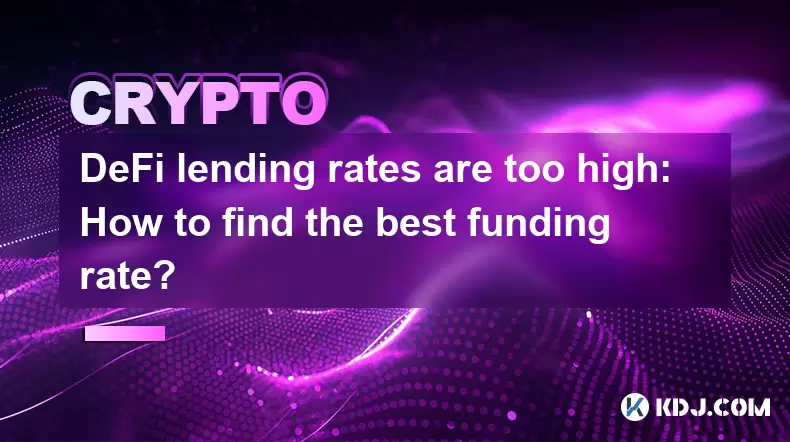
In the world of decentralized finance (DeFi), lending rates can often be a significant concern for users looking to borrow assets. High lending rates can make borrowing less attractive and more costly, impacting the overall efficiency and appeal of DeFi platforms. Understanding how to find the best funding rate is crucial for anyone looking to engage in DeFi lending and borrowing. This article will guide you through the process of identifying and securing the most favorable rates in the DeFi ecosystem.
Understanding DeFi Lending Rates
Before diving into how to find the best funding rates, it's essential to understand what influences DeFi lending rates. Lending rates in DeFi are determined by the supply and demand dynamics of the platform. When there is a high demand for borrowing a particular asset and a low supply of that asset being lent out, the rates tend to increase. Conversely, if there is a surplus of an asset available for lending and low demand for borrowing, the rates will decrease.
Additionally, the risk associated with the asset being lent out can affect the rate. Riskier assets typically command higher interest rates to compensate lenders for the increased risk of default or volatility. Platforms also have different mechanisms for setting rates, such as algorithmic adjustments based on utilization rates or fixed rates set by the platform's governance.
Researching DeFi Platforms
To find the best funding rate, you need to start by researching various DeFi platforms. Each platform has its own set of features, supported assets, and interest rate models. Some popular DeFi lending platforms include Aave, Compound, and MakerDAO.
- Visit the websites of these platforms to get an overview of their current lending rates.
- Use DeFi aggregators like Zapper or DeFi Pulse to compare rates across multiple platforms at a glance.
- Read reviews and user feedback on platforms like DeFi Rate or CryptoCompare to understand the user experience and reliability of each platform.
Comparing Interest Rates
Once you have a list of potential platforms, the next step is to compare the interest rates they offer. Interest rates can vary significantly between platforms, and even for the same asset.
- Check the current rates for the asset you wish to borrow on each platform. This information is usually available on the platform's lending or borrowing page.
- Look at the historical data of interest rates to understand how they have fluctuated over time. Some platforms provide this data, or you can use third-party tools like LoanScan to track historical rates.
- Consider the stability of the rates. Some platforms may offer lower rates but with more volatility, while others might have slightly higher rates but with more stability.
Evaluating Additional Factors
While interest rates are a critical factor, they are not the only consideration when choosing a DeFi lending platform. Other factors can significantly impact your borrowing experience and the overall cost of borrowing.
- Collateral requirements: Some platforms may require more collateral than others, which can affect your borrowing capacity and the risk you are exposed to.
- Liquidation thresholds: Understanding the liquidation thresholds and how they are calculated is crucial to avoid losing your collateral.
- Platform fees: Some platforms charge fees for borrowing, which can add to the overall cost. Make sure to factor these into your calculations.
- Security and audits: The security of the platform is paramount. Look for platforms that have undergone thorough security audits and have a good track record.
Optimizing Your Borrowing Strategy
To get the best funding rate, you need to optimize your borrowing strategy. Strategic borrowing can help you minimize costs and maximize returns.
- Diversify across platforms: Instead of borrowing all your funds from one platform, consider spreading your borrowing across multiple platforms to take advantage of the best rates available.
- Monitor rates regularly: DeFi rates can change rapidly. Regularly monitoring rates and being ready to switch platforms can help you secure better rates.
- Use stablecoins: Borrowing in stablecoins can often result in lower interest rates compared to volatile cryptocurrencies. This can be a more cost-effective option for long-term borrowing.
- Leverage DeFi tools: Utilize tools like Yearn Finance or Harvest Finance, which can automatically move your funds to the platform offering the best yield, helping you optimize your lending and borrowing strategy.
Executing Your Borrowing Plan
Once you have identified the best platform and optimized your strategy, it's time to execute your borrowing plan. Here are the steps to follow:
- Create an account on the chosen DeFi platform. This usually involves connecting your wallet, such as MetaMask, to the platform.
- Deposit collateral: Transfer the required collateral to the platform. Ensure you understand the collateral requirements and the liquidation thresholds.
- Initiate the borrowing process: Navigate to the borrowing section of the platform, select the asset you want to borrow, and enter the amount. Review the interest rate and any associated fees.
- Confirm the transaction: Once you are satisfied with the terms, confirm the transaction through your wallet. The borrowed funds will be transferred to your wallet.
Frequently Asked Questions
Q: Can I switch my borrowed funds to another platform if I find a better rate?
A: Yes, you can switch your borrowed funds to another platform if you find a better rate. However, you will need to repay the loan on the original platform first, which may involve additional transaction fees. Always consider these costs when deciding whether to switch.
Q: Are there any risks associated with borrowing in DeFi?
A: Yes, there are several risks associated with borrowing in DeFi, including smart contract risks, liquidation risks, and market volatility. It's essential to thoroughly research and understand these risks before engaging in DeFi lending and borrowing.
Q: How can I minimize the impact of high lending rates on my borrowing costs?
A: To minimize the impact of high lending rates, you can diversify your borrowing across multiple platforms, regularly monitor rates and switch when necessary, and consider borrowing in stablecoins, which often have lower rates. Additionally, using DeFi tools that automatically optimize yields can help manage costs.
Q: What should I do if I am unable to repay my DeFi loan?
A: If you are unable to repay your DeFi loan, you risk having your collateral liquidated. To avoid this, you can try to add more collateral to your position, repay part of the loan to reduce the debt, or seek additional funds to cover the repayment. Always monitor your loan closely and act quickly if you see potential issues.
Disclaimer:info@kdj.com
The information provided is not trading advice. kdj.com does not assume any responsibility for any investments made based on the information provided in this article. Cryptocurrencies are highly volatile and it is highly recommended that you invest with caution after thorough research!
If you believe that the content used on this website infringes your copyright, please contact us immediately (info@kdj.com) and we will delete it promptly.
- Trump, Crypto Vehicle, and WLFI Tokens: A New York Minute on the Latest Buzz
- 2025-08-10 00:30:12
- Wheat Penny Fortune: Unearthing Valuable Coins in Your Pocket Change
- 2025-08-10 00:35:19
- AI Coin Mania: Dubai Millionaires Eye 20x Gains!
- 2025-08-09 23:10:12
- ChatGPT's Hot Takes: Meme Coins to Buy Now for a Wild 2025!
- 2025-08-09 23:10:12
- Jurassic Park Vibes in Your Pocket: The Colourful Canadian Coin Featuring a Dinosaur Eye
- 2025-08-09 23:50:12
- Altcoins on the Radar: VeChain, Ethereum, and the Shifting Crypto Landscape
- 2025-08-09 23:50:12
Related knowledge

What is the difference between DeFi and CeFi? An article analyzing the advantages and disadvantages of both
Jun 13,2025 at 03:57am
Understanding the Foundations of DeFi and CeFiTo fully grasp the difference between DeFi (Decentralized Finance) and CeFi (Centralized Finance), it’s ...
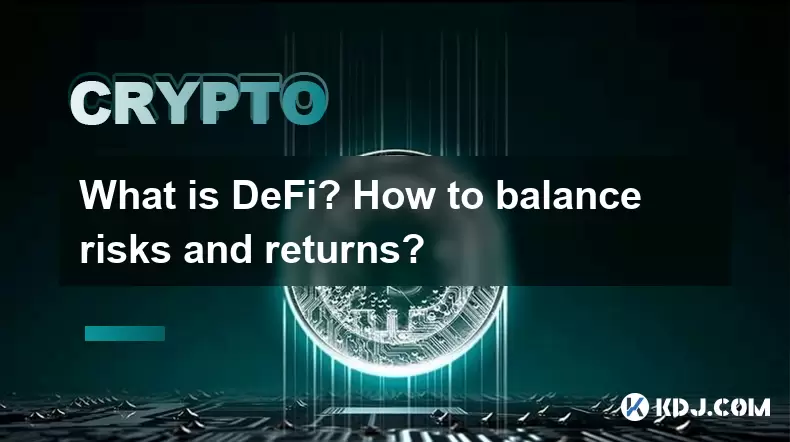
What is DeFi? How to balance risks and returns?
May 31,2025 at 12:22pm
What is DeFi? How to Balance Risks and Returns? Decentralized Finance, commonly known as DeFi, represents a revolutionary shift in the financial ecosy...
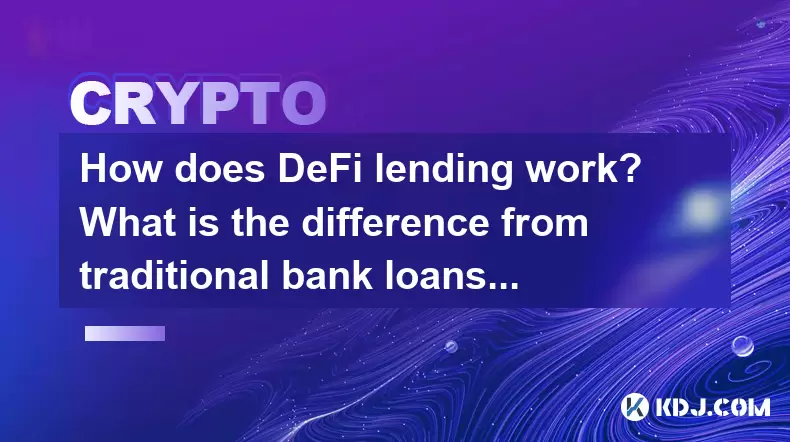
How does DeFi lending work? What is the difference from traditional bank loans?
May 29,2025 at 05:36pm
Introduction to DeFi LendingDeFi lending, or decentralized finance lending, represents a revolutionary shift in the way borrowing and lending are cond...
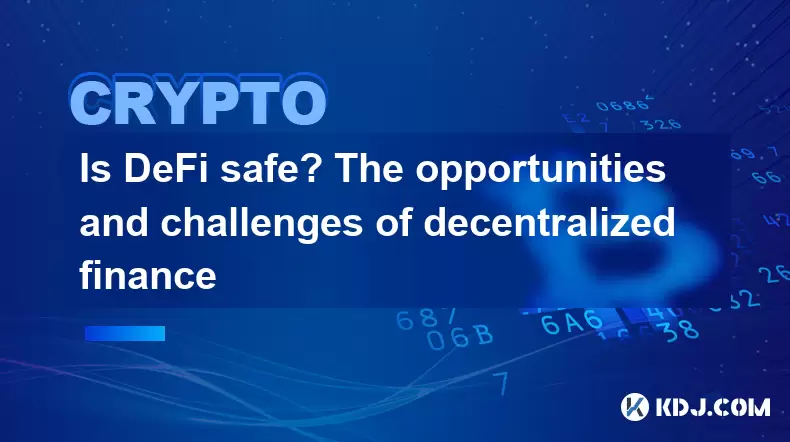
Is DeFi safe? The opportunities and challenges of decentralized finance
May 27,2025 at 02:28pm
Decentralized Finance, commonly known as DeFi, has revolutionized the financial landscape by offering a range of financial services without the need f...
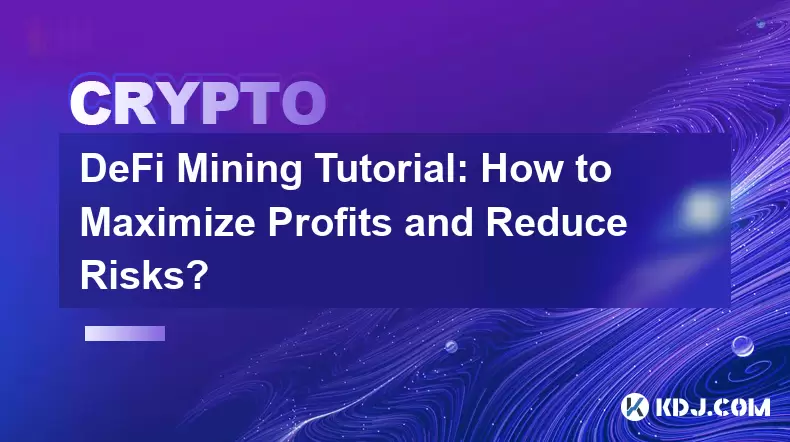
DeFi Mining Tutorial: How to Maximize Profits and Reduce Risks?
May 27,2025 at 07:42am
DeFi, or Decentralized Finance, has opened up a new world of opportunities for crypto enthusiasts looking to maximize their profits through various mi...
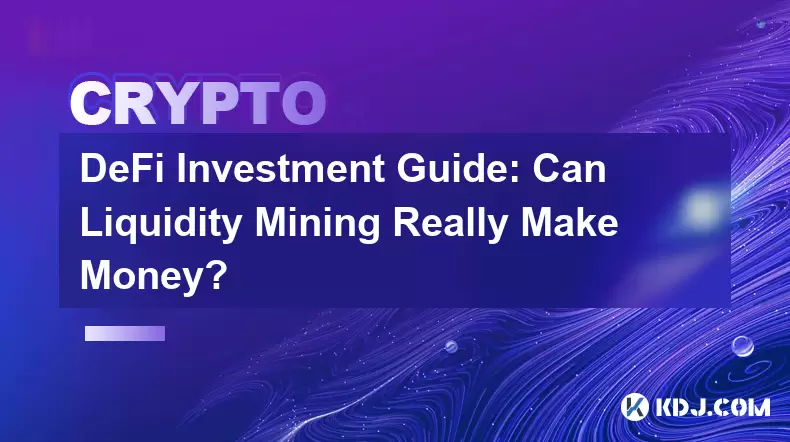
DeFi Investment Guide: Can Liquidity Mining Really Make Money?
May 28,2025 at 10:18am
Introduction to Liquidity Mining in DeFiLiquidity mining has emerged as a popular method for earning passive income within the decentralized finance (...

What is the difference between DeFi and CeFi? An article analyzing the advantages and disadvantages of both
Jun 13,2025 at 03:57am
Understanding the Foundations of DeFi and CeFiTo fully grasp the difference between DeFi (Decentralized Finance) and CeFi (Centralized Finance), it’s ...

What is DeFi? How to balance risks and returns?
May 31,2025 at 12:22pm
What is DeFi? How to Balance Risks and Returns? Decentralized Finance, commonly known as DeFi, represents a revolutionary shift in the financial ecosy...

How does DeFi lending work? What is the difference from traditional bank loans?
May 29,2025 at 05:36pm
Introduction to DeFi LendingDeFi lending, or decentralized finance lending, represents a revolutionary shift in the way borrowing and lending are cond...

Is DeFi safe? The opportunities and challenges of decentralized finance
May 27,2025 at 02:28pm
Decentralized Finance, commonly known as DeFi, has revolutionized the financial landscape by offering a range of financial services without the need f...

DeFi Mining Tutorial: How to Maximize Profits and Reduce Risks?
May 27,2025 at 07:42am
DeFi, or Decentralized Finance, has opened up a new world of opportunities for crypto enthusiasts looking to maximize their profits through various mi...

DeFi Investment Guide: Can Liquidity Mining Really Make Money?
May 28,2025 at 10:18am
Introduction to Liquidity Mining in DeFiLiquidity mining has emerged as a popular method for earning passive income within the decentralized finance (...
See all articles

























































































